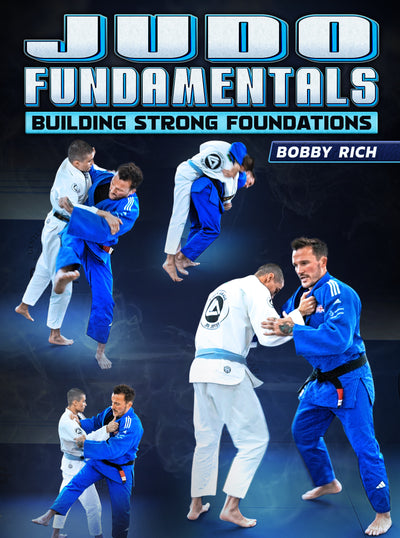Newaza for Everyone with Travis Stevens
In Judo, what is more important standing techniques or tachiwaza or ground techniques newaza? This is a debate that curiously plays out in other martial arts such as Brazilian Jiu Jitsu. In many Judo Academy's tachiwaza make up the bulk of the teaching curriculum, whereas in the Brazilian Jiu Jitsu academies, the opposite tends to take place.
Regardless of whether you are an average practitioner or a student striving to be a competitor, it's important to have balance and not necessarily overly favor standing over ground techniques. From a simple self defense perspective, having no knowledge of ground techniques would put you in a vulnerable position should you end up on the ground with an assailant.
Travis Stevens is a Olympic silver medalist so he has competed at the highest levels possible in the sport of judo. He is also a Coach and Instructor at his own academy, so he deals with many judoka hobbyists. As a means of cross-training, he began training and ultimately earned a black belt in the art of Brazilian Jiu Jitsu from legendary instructor John Danaher.
Travis Stevens recognizes the importance of newaza and balancing your standing techniques with a basic knowledge of what to do on the ground. In the video below, he breaks down a very simple Newaza technique breaking down the opponent who turtles up defensively and getting to a position where their defenses are broken down and they are now put in a controlled pin.
< p>Check out the video below and then we'll break it down afterwards. For more of Travis Stevens' Newaza instruction, check out NEWAZA MASTERY from JudoFanatics.com.Let's break down this Newaza from Travis Stevens into digestible bites:
Pinch With The Knees
The key to ensuring that most techniques are effective is maintaining a strong, tight connection to the opponent's body. These keeps us tight to prevent them from being overly mobile and possibly escaping our plans. It also forces them to carry more of our weight which puts us at a distinct advantage.
Keep the Hips Behind the Belt
When approaching a turtled opponent, it is crucial not to over commit the weight forward. By mindfully keeping the hips behind the opponent's belt, you control the distribution, staying heavy and allowing you to make precise forward movements in a way that doesn't create a scramble.
Reach through under arm with the elbow tight to hip and arm tight to ribs.
Again, it's about connection and staying tight and heavy to the opponent to ensure that your progression is on your terms and you're not thrown forward over their head.
Punch lapel forward and with free hand grab back of collar to tighten grip and control of opponent.
It's important to use each of your grips to set up the next grip. There must be a teamwork of sorts when it comes to offensive gripping. By punching the grip forward and securing the back of the collar grip, you have effectively cinched yourself to the opponent. During this time there is a quick jump forward and squat slightly higher than the belt, but the knees remain tight.
Move opponent's head to the side changing the angle of his spine in relation to you.
If you think of yourself as having your spine in line with your opponent, you are attempting to shift their head to one side which curves their spine and separates the opponent's ear from their shoulder. This allows you to slowly and safely drop your elbow into that space without getting rolled.
Use top leg momentum to pull opponent over to his hips.
As you are now fully committed to slip over their shoulder onto your shoulder, you will use the leg that is now suspended in the air to whip back and pull the opponent over their own shoulder onto their hips. It is key to keep your head above your opponent's head to maximize the leverage of this technique.
Use top leg as a hook to kick his top leg away allowing you to free your bottom leg.
Once you have the opponent pull over to their side, you will most likely find your bottom leg is trapped under their body. By using the top leg to hook behind their knee you can lift them up and forward just enough to allow you to pull your bottom leg out.
Pop up on knee and Pull opponent back towards you.
Now that both legs are free you will pop to your knee and pull them towards you. You will then finish by overhook the opponent's head and bracing them against your thigh to secure the pin.
Use this simple technique to begin opening up your newaza game if you've never thought much about Judo on the ground. With this detailed, but easy breakdown of the technique you will begin wetting your appetite for more Newaza in the future.
For more from Travis Stevens and the Newaza game, check out NEWAZA MASTERY available right now from Judo Fanatics. You can get your copy here or at the BUY NOW link below.




